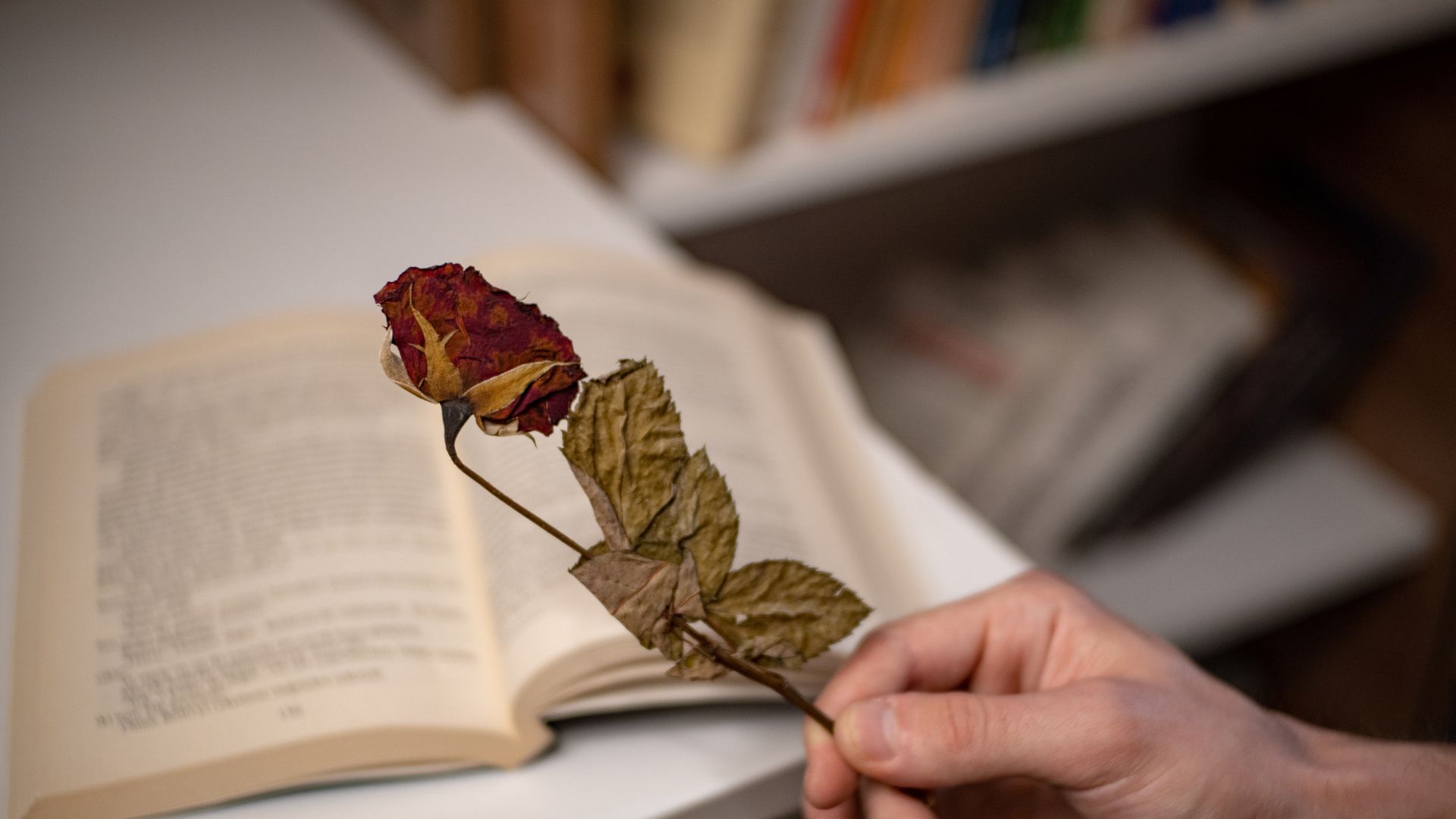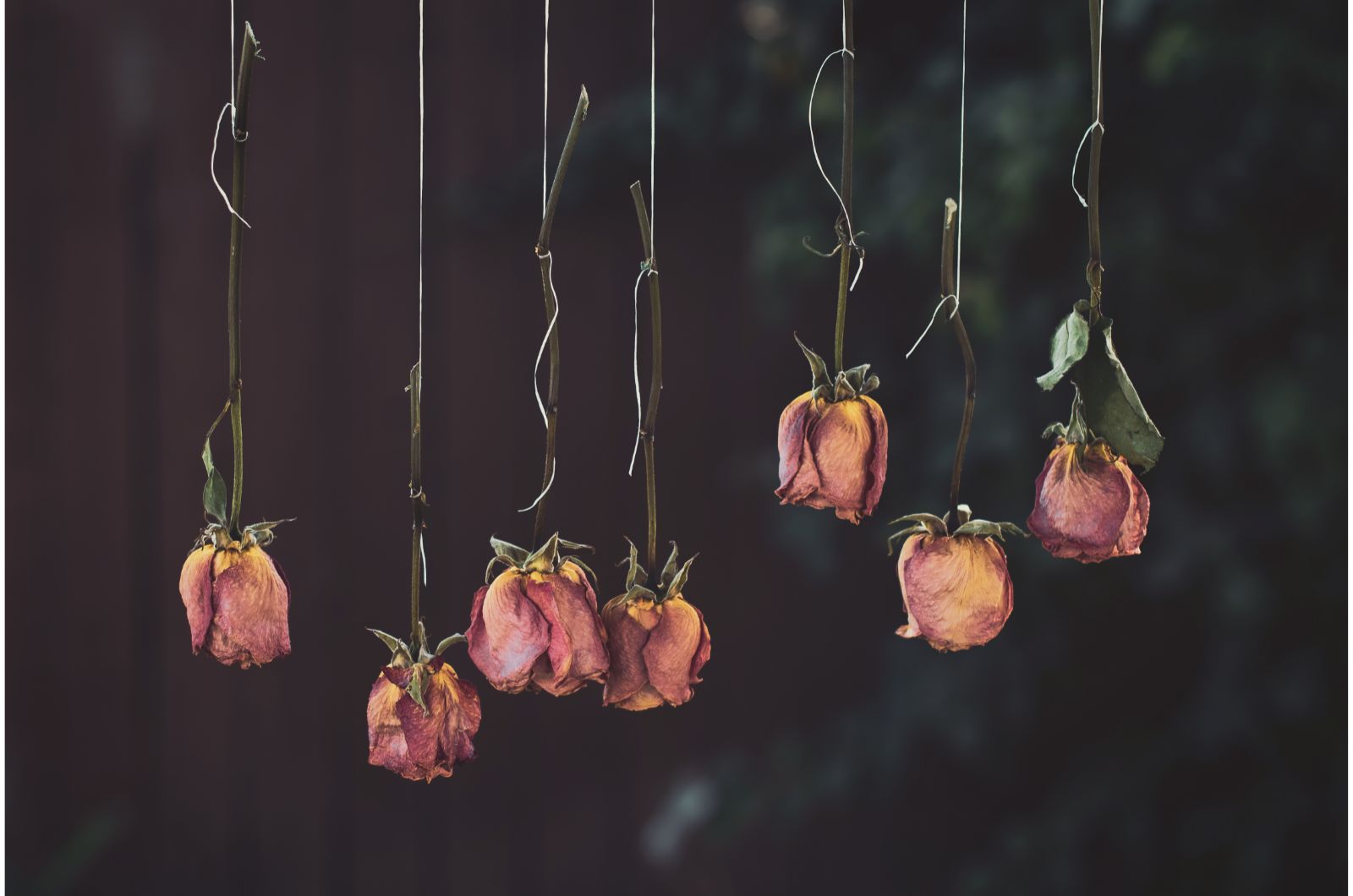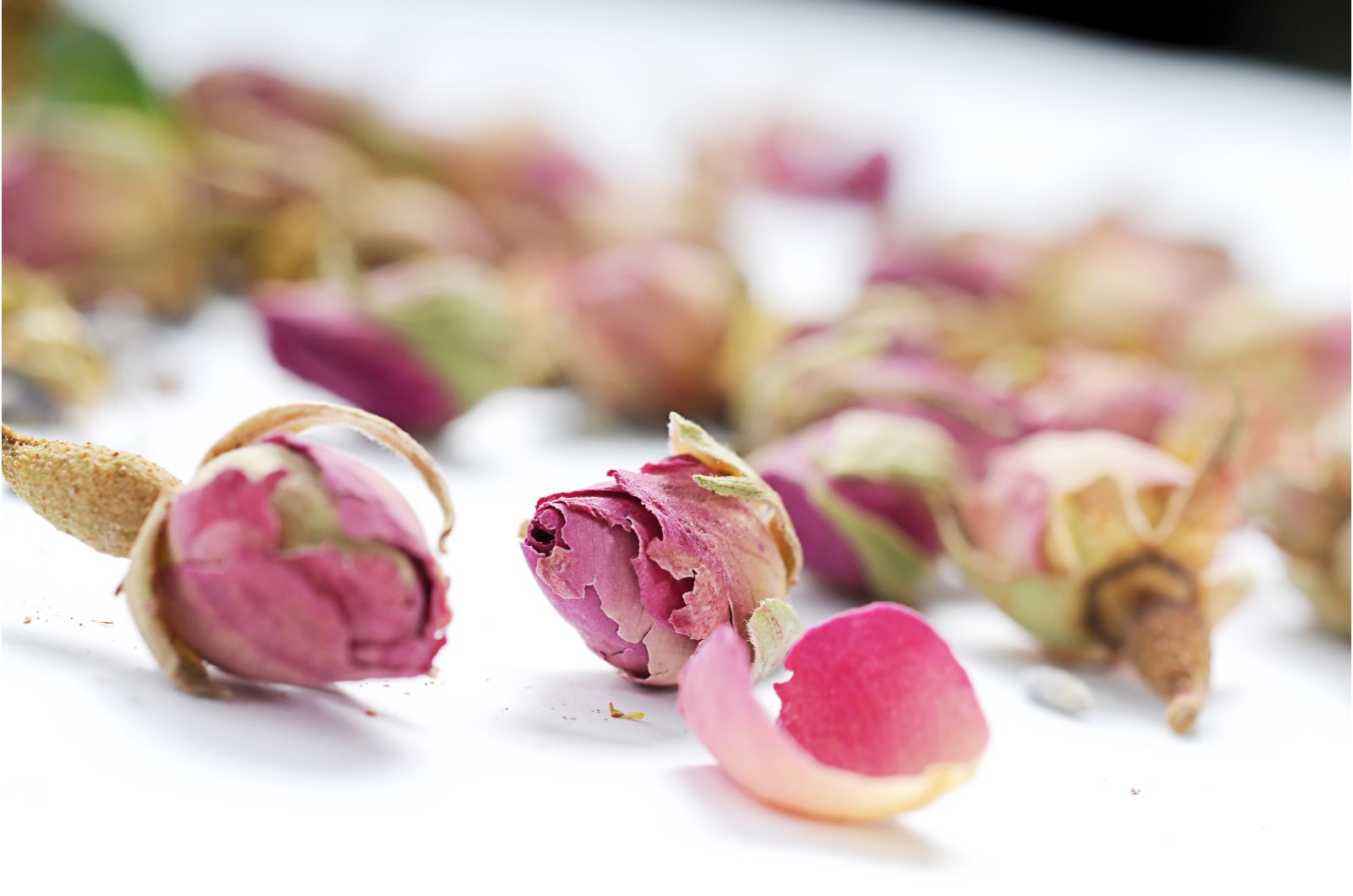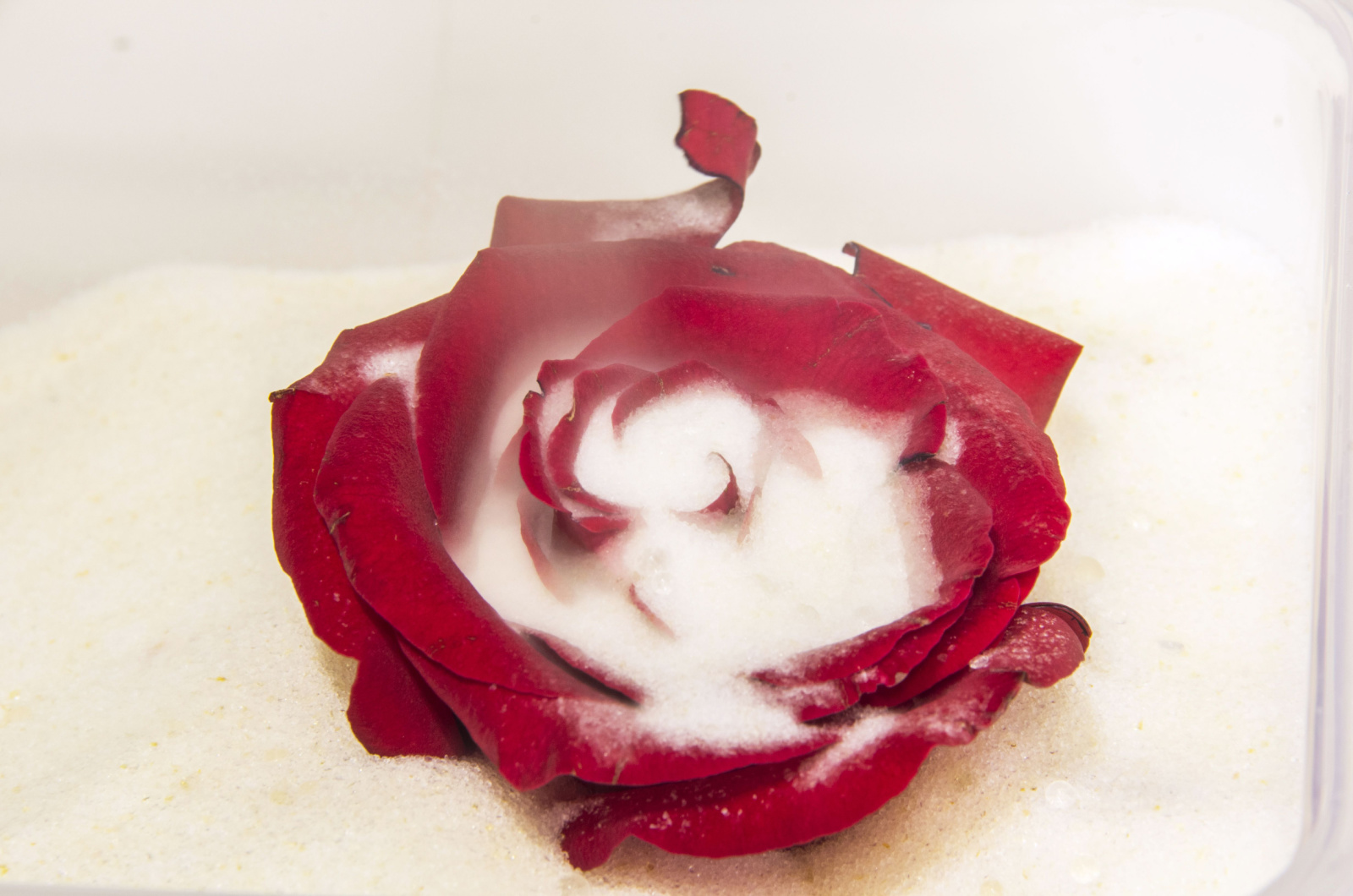Who doesn’t like to get flowers on their birthday, Mother’s Day, or Valentine’s Day? Yet, they are a keepsake that lasts for only a few days (a couple of weeks at most) and then they start to droop and wilt.
But what if I told you that you can keep these gifts with you forever? There are five methods you can use to keep your roses (and other flowers) with you forever.
Here they are!
#1 Air-Drying
Tools: Rubber band and a string.
Benefit: This method is the best choice for drying bouquets or single roses with entire stems because you don’t have to clip anything. Afterwards, you can display the dry arrangement in a vase.
Guide:
• When you notice your flowers have started to dry in a vase, take them out and wrap a rubber band around them to keep them in place.
* If you want to dry single roses, you can skip this step!
• Tie the string around the band and leave a decent amount of string attached. Ensure that the blooms are facing downwards for the best results.
• Hang the flowers in a warm, dark, and dry spot with great air circulation.
• It will take about 2-3 weeks for the drying to complete. Although, you can check your roses every couple of days to see whether everything is going according to plan.
#2 Book-Pressing
Tools: Two heavy books (phone books, dictionaries, etc.), scissors, and wax or parchment paper.
Benefit: This method is one of the easiest and doesn’t need too much work. However, it does take longer to complete than other rose preservation methods.
Guide:
• Cut the stem of your rose so that it can fit into the book you want to use for pressing.
• Open one of the books in the middle (you don’t have to be exact). Place some parchment paper to protect the pages and put your rose as close to the spine as possible.
• Close the book and lay another heavy one on it to add weight and pressure. Now’s the time to wait.
• It takes about a month or so for the rose to fully dry, but it is best to check up on it once a week. The paper will soak up the moisture and you may need to replace it during the process. If it’s wet all the time, it will destroy your book and the flower may start to rot.
#3 Microwave-Preserving
Tools: Scissors, parchment paper, a microwave, and a desiccant (optional).
Benefit: This method is one of the fastest ways to save your roses and flowers.
Guide:
• Clip the rose so that it can fit on the microwave’s turntable.
• Place your roses on parchment paper and turn the microwave on at the lowest setting. Check your roses every 45-60 seconds.
* Spray your roses with a desiccant before placing them in the microwave because it can prevent the petals from shriveling and deforming.
#4 Using Silica Gel
Tools: Silica gel, an airtight container, and scissors (if needed).
Benefit: This method will keep the original lively appearance of your roses.
Guide:
• Use a large airtight container so that all the flowers can fit in it. If you don’t have any, trim the stems.
• Cover your roses with silica gel until you conceal every part of the flower, and close the container.
* If you want to preserve the original shape of your rose, place it facing upwards. If you don’t mind it being squished on one side, lay it on the side.
• It will take 7-21 days for your roses to dry out. If you don’t want to wait that long, you can pop the container into a microwave (if it’s suitable for that).
• Once your rose is dry, shake out any remaining silica gel beads and add the flower to your home decor.
#5 Vase-Drying
Tools: Vase and hairspray.
Benefit: If you want to dry your roses with the least amount of work, just let them dry out in a vase.
Guide:
• Once your roses start to wilt, get rid of all the moisture. It will only cause your flowers to rot.
• Leave the roses in a vase in a warm, dark, and dry spot with good ventilation. Popping open a window and avoiding direct sunlight will speed up the process and prevent color loss.
• After your flowers have dried, spray them with hairspray for protection. You can use this technique with other air-drying methods.






